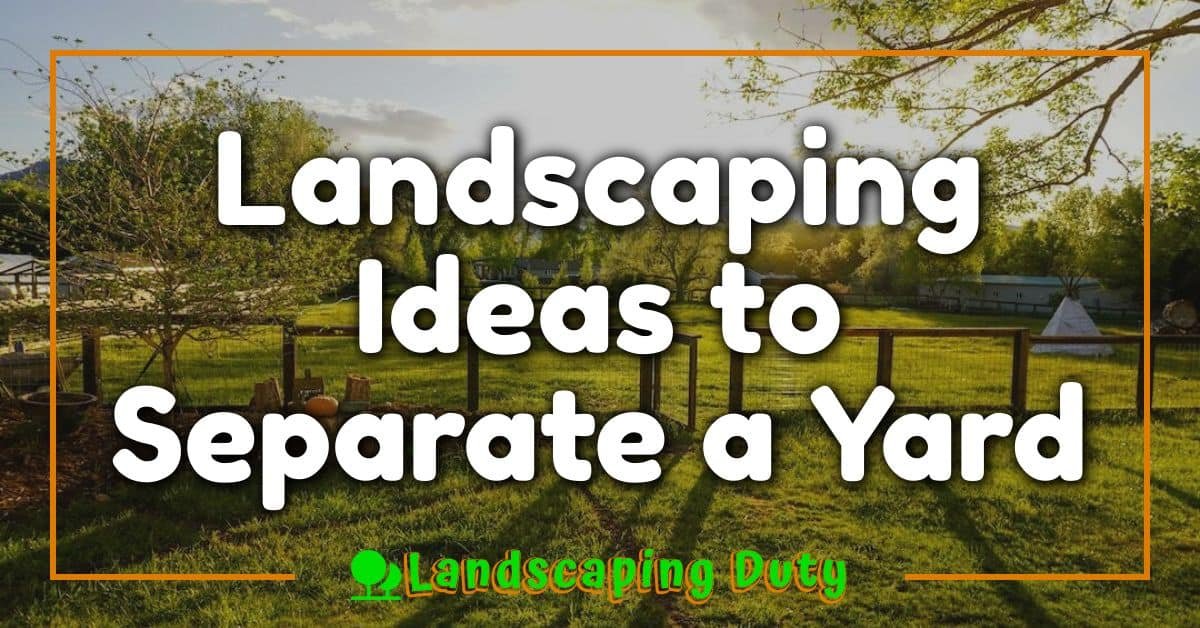There’s something magical about stepping into a woodland garden. The dappled sunlight, the earthy scent of moss and soil, and the gentle rustle of leaves—it feels like nature’s own sanctuary. Every time I wander through one, I’m reminded of how calming and enchanting these spaces can be.

Creating a woodland garden isn’t just about planting trees and shrubs; it’s about capturing that sense of wonder and tranquility. Whether it’s a shaded corner in your backyard or a sprawling space waiting to be transformed, there’s so much potential to craft your own little forest retreat.
If you’ve ever dreamed of a garden that feels like a hidden escape, you’re in the right place. Let’s explore some ideas and inspiration to bring the charm of a woodland garden to life.
Understanding Woodland Gardens
Woodland gardens offer a serene escape by mimicking the natural beauty of forested areas. Their layered planting, subtle textures, and calm ambiance make them stand apart.
What Makes Woodland Gardens Unique?
Their uniqueness lies in the way they replicate nature’s organic balance. These gardens combine trees, understory plants, ground covers, wildflowers, and mosses to create multiple layers. Shade from tall trees, dappled light, and a focus on native plants maintain harmony with the ecosystem. Seasonal changes, like spring flowers or fall foliage, add dynamic interest throughout the year.
Examples include the use of ferns, hostas, and trilliums for lush ground coverage under deciduous or evergreen trees like maples or oaks. Incorporating native plant species also attracts birds, butterflies, and other wildlife.
Key Elements of a Woodland Garden
- Plant Layers: A woodland garden includes tree canopies, shrubs, perennials, and ground covers. For instance, dogwoods add height, azaleas fill the mid-layer, and ivy or moss form the lowest layer.
- Shade and Light: While trees dominate, partial sunlight filters through to nourish shade-loving plants like bluebells or Solomon’s seal.
- Naturalistic Paths: Winding trails made of bark mulch or gravel blend seamlessly into the setting and provide accessibility.
- Wildlife Support: Including berry-producing or nectar-rich plants, such as elderberries or milkweed, supports pollinators and birds.
- Earthy Accents: Logs, rocks, and natural water features like small streams or ponds enhance the woodland feel.
Finding Woodland Garden Inspiration
A woodland garden draws directly from the beauty of nature. Exploring existing designs and environments offers endless ideas for creating serene, organic spaces.
Drawing Ideas From Nature
Observing local forests and wooded areas provides practical inspiration. Note how native trees, shrubs, and ground covers coexist naturally. Pay attention to plant combinations, layering effects, and how sunlight filters through the canopy to shape the environment. Seasonal shifts in wildflowers, foliage, and textures reveal dynamic ways to enhance visual interest. For instance, a springtime forest bursting with daffodils and ferns could inform your planting palette, while moss-covered logs might inspire subtle accents.
Replicating organic patterns leads to more cohesive and authentic designs. Study the placement of rocks, fallen branches, and water features in natural settings. Adapt these elements in your garden to foster a similar connection to nature.
Famous Woodland Garden Designs
Exploring renowned woodland gardens showcases diverse design approaches. One example is the Beth Chatto Gardens in Essex, UK, where drought-tolerant woodland plants create ideal layers under shady trees. Another is the Enchanted Garden at Mount Usher in Ireland, known for its curated plant diversity and meandering paths.
In the US, the Bloedel Reserve in Washington offers a tranquil landscape blending native species with Japanese-inspired features. The Garden in the Woods in Massachusetts demonstrates how to combine indigenous plants with sustainable layers. These gardens exhibit how thoughtful planning and attention to detail create immersive woodland retreats. Studying famous examples can help refine ideas for layouts, plant selection, and design details.
Planning Your Woodland Garden
Creating a woodland garden starts with thoughtful planning. By focusing on location, native plants, and naturalistic design, you can craft a tranquil and thriving space.
Choosing The Right Location
I consider shade and soil when selecting a location for a woodland garden. Areas under existing trees, near wooded edges, or naturally shady spots work best. Optimal sites have well-draining soil rich in organic matter. To mimic natural woodlands, I prioritize spots with dappled sunlight or partial shade.
Accessibility is important, so I envision pathways or clearings to navigate through the space. Choosing a location with natural wind protection, like near hedges or larger trees, helps maintain a sheltered, calm environment.
Selecting Native Plants And Trees
I choose native plants to create a balanced ecosystem and support local wildlife. Native trees like oak, birch, or dogwood provide crucial canopy layers. For understory interest, I include shrubs such as spicebush or witch hazel. Ground covers, like ferns or wild ginger, complete the layered effect.
For seasonal beauty, I incorporate wildflowers like trilliums, bloodroot, or Virginia bluebells, which blend seamlessly into the environment. I research local native species to ensure hardiness and maintain the garden’s ecological harmony.
Designing And Maintaining A Woodland Garden
Designing a woodland garden involves creating a tranquil, layered space that feels harmonious and natural. Maintenance ensures the garden stays lush and inviting throughout the seasons.
Incorporating Paths And Water Features
Paths and water features enhance both functionality and aesthetics. I design paths to guide movement and protect delicate plants. Natural materials like wood chips, gravel, or stepping stones blend seamlessly with the environment. Curved layouts mimic organic forest trails, creating a sense of discovery.
Water features, such as small ponds or shallow streams, add movement and support wildlife. Reflecting nature, I use rocks, moss, and surrounding plants to frame water elements. Birdbaths or fountains suit smaller spaces while maintaining the woodland aesthetic.
« Transform Your Outdoor Space: Backyard Ideas with Outdoor Kitchens for Style and Functionality 25 Stunning Backyard Ideas with Pools to Transform Your Outdoor Space »
Seasonal Care Tips
Seasonal care ensures the health and vibrancy of the garden. In spring, I focus on clearing winter debris, pruning shrubs, and planting seasonal wildflowers like trillium and jack-in-the-pulpit. Mulching helps retain moisture and nourish the soil.
Summer care includes regular watering during dry spells and removing invasive plants. I monitor shade levels as tree canopies grow, trimming as necessary to maintain balance. For fall, I rake and compost fallen leaves to enrich the soil. Winter preparation involves protecting delicate plants with mulch layers and assessing structural elements like paths and water features.
Benefits Of A Woodland Garden
Woodland gardens provide a tranquil retreat, offering a natural escape from daily life. Their layered design, with trees, shrubs, and ground cover, creates a multi-sensory experience that immerses you in nature’s beauty. They evoke feelings of peace and promote relaxation, making them ideal spaces for unwinding.
Wildlife thrives in woodland gardens, as native plants supply nectar, berries, and shelter. Birds, bees, and butterflies benefit from these habitats, enriching the garden’s ecosystem. Watching wildlife adds vibrancy and joy to the space.
Low-maintenance designs make woodland gardens practical. Once established, native species require less watering and care due to their adaptation to local climates. Natural mulching and shade help retain soil moisture, reducing upkeep efforts.
Seasonal transformations keep the space dynamic. Spring flowers bring bursts of color, summer shades provide coolness, autumn leaves add warm hues, and winter landscapes showcase structural beauty. These changes maintain year-round interest.
Environmental benefits include improved air quality, soil health, and carbon sequestration. Trees and plants filter pollutants, enrich the soil, and capture carbon, making these gardens sustainable and eco-friendly.
Conclusion
A woodland garden is more than just a space; it’s a chance to reconnect with nature and create a peaceful retreat right at home. With thoughtful planning and a touch of creativity, you can design a haven that feels both magical and harmonious.
Whether you’re inspired by the beauty of native plants, the charm of seasonal changes, or the soothing sounds of a naturalistic water feature, every detail adds to the experience. It’s a journey worth taking, and the rewards are endless.
So why not start dreaming up your own woodland escape? You’ll be amazed at how transformative it can be—for both your outdoor space and your soul.
















